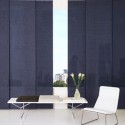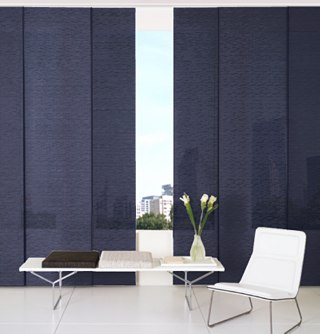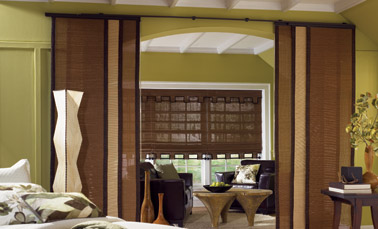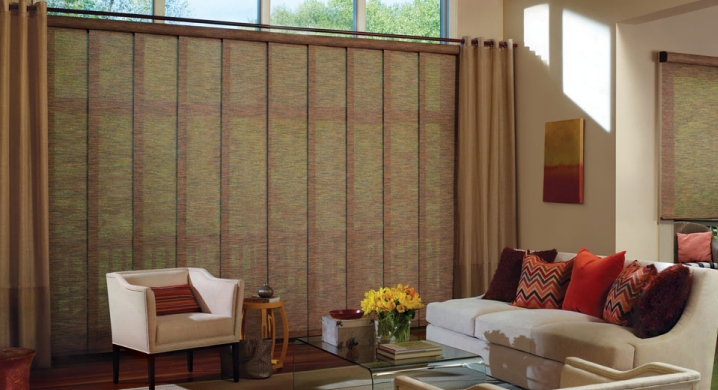Patio doors, as many of you have found out, are ever the challenge to cover. Whether sliding patio doors or swinging French doors, window treatments can be a challenge on these expansive glass doors. And, wall-to-wall windows are equally challenging; what do you use to cover them? Read on to learn about another option created specifically for these difficult-to-treat windows.
Sliding panel window treatments are the latest option for covering patio doors and large expanses of glass. They offer a modern alternative to vertical blinds, with a clean, sleek look.
The panel widths available vary from manufacturer to manufacturer, but many range from 11″ to 24″ in size. The panels glide effortlessly to the side of each window, offering a clear view out the window, but complete privacy when closed.
Most sliding panel systems are available in a variety of fabrics and colors, making them a great option for homes of all styles. While some are completely private or opaque, others allow a partial view through to the outside. The most popular options include highly-textured woven grass fabrics, as well as sheer and floral printed fabrics.
Gliding panel systems can also often be used as room dividers or even closet doors. They can be a more stylish option than other room dividers, allowing homeowners to coordinate the fabrics throughout the room.
However, sliding panels are not the best option for every window situation. Due to the width of the individual panels, the stack of the treatment can get large – especially on a very wide window. For the Hunter Douglas version, for example, the stack is equal to one panel width plus 1″ for each panel across the window. With a 17″ wide panel, you can see that the stack can quickly add up across a wide window. Keep this in mind, as the stack can cover an entire pane of glass in some cases!
In addition, gliding panels are not especially flexible in their function. Unlike vertical blinds, the panels cannot be rotated to allow a little light in or to see outside. Instead, as with vertical honeycomb shades, the panels are either open or closed – there really isn’t anything in between.
Depending on the sliding panel system you choose, the treatment can get very deep, as well. The Hunter Douglas system, Skyline, has a very minimal depth due to a special stacking system in the headrail – just 2-1/2″. This allows it to fit inside even a shallow window or door frame for an inside mount situation. However, some other systems can get very deep depending on the number of panels in the treatment – sometimes 6″ or more!
Although sliding panels may not be right in every situation, they can be a modern addition to many homes. They offer style, sun control and privacy to very large windows and doors, giving many homeowners a great alternative to vertical blinds.
Pin It




I’m impressed by this article. You have a fine taste and insight on window treatments.
Ed of InteriorMotivesHuntley.com